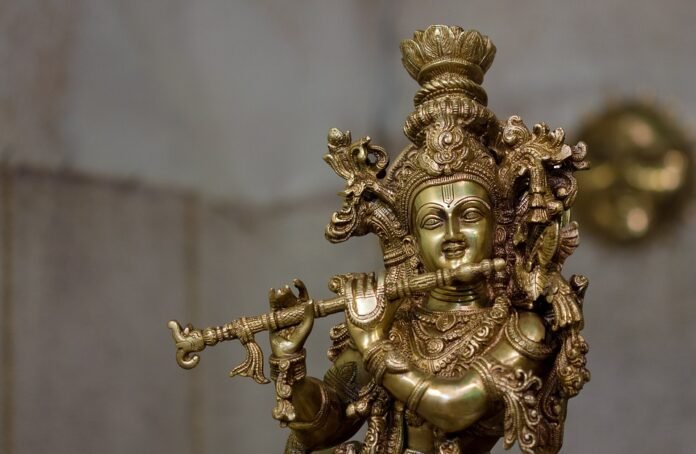Of course. Here is an article about Yoga and Meditation as India’s gift to the world.
An Ancient Breath, A Global Embrace: Yoga and Meditation, India’s Timeless Gift to the World
In the relentless hum of the 21st century, amidst buzzing notifications and endless to-do lists, millions of people across the globe consciously choose to do something radical: they stop. They unroll a mat, close their eyes, and simply breathe. In that moment of stillness, whether in a sleek New York studio, a sun-drenched park in Sydney, or a quiet living room in London, they are connecting with a practice that is thousands of years old—a profound and enduring gift from India.
Yoga and meditation, once the esoteric practices of sages meditating in Himalayan caves and along the banks of the sacred Ganges, have blossomed into a global phenomenon. But to see them merely as a fitness trend or a relaxation technique is to miss the depth of their origin and purpose. They are India’s spiritual and philosophical legacy, a holistic system for harmonizing the mind, body, and spirit, offered freely to a world in desperate need of balance.
The Roots of Stillness: An Ancient Heritage
The story of yoga begins not in a modern gym, but in the ancient soil of the Indus Valley Civilization over 5,000 years ago. Early archaeological finds, like the famous Pashupati seal, depict figures seated in meditative postures, suggesting that the quest for inner awareness is deeply woven into the fabric of Indian consciousness.
This nascent wisdom was later articulated in the Vedas and the Upanishads, ancient scriptures that explored the nature of reality, consciousness, and the self. However, it was the sage Patanjali who, around 400 CE, codified the practice in his seminal work, the Yoga Sutras. Here, he laid out the "Ashtanga," or the eight-limbed path of yoga.
This framework reveals that yoga is far more than physical postures (asanas). It is a comprehensive guide to living a meaningful life, encompassing ethical principles (Yamas and Niyamas), breath control (Pranayama), withdrawal of the senses (Pratyahara), concentration (Dharana), meditation (Dhyana), and finally, enlightenment (Samadhi). The physical poses are merely one tool to prepare the body for the deeper, internal work of meditation.
The Journey from East to West
For centuries, this profound knowledge was passed down from guru to disciple. Its journey to the global stage began in earnest in the late 19th and early 20th centuries. In 1893, Swami Vivekananda captivated the Parliament of the World’s Religions in Chicago, introducing Western audiences to the philosophical richness of Indian thought, including the principles of Vedanta and Yoga.
He was followed by other pioneering masters. Paramahansa Yogananda, with his influential book Autobiography of a Yogi, brought the spiritual science of Kriya Yoga to America. Later, B.K.S. Iyengar meticulously detailed the alignment of asanas, making the physical practice safe and accessible for all, while Pattabhi Jois popularized the vigorous Ashtanga Vinyasa style. These teachers, and many others, acted as cultural ambassadors, translating ancient wisdom for a modern world.
A Universal Antidote for Modern Ailments
Why has this ancient gift been so fervently embraced? The answer lies in its universal relevance. Yoga and meditation offer a powerful antidote to the characteristic ailments of modern life: stress, anxiety, disconnection, and burnout.
- For the Body: On a physical level, yoga builds strength, enhances flexibility, and improves balance. Scientific studies have validated its benefits in lowering blood pressure, reducing chronic pain, and boosting the immune system.
- For the Mind: This is where the true transformation occurs. Pranayama, or controlled breathing, calms the nervous system, pulling us out of the "fight-or-flight" response. Meditation, the practice of focused awareness, trains the mind to be less reactive and more present. It’s not about emptying the mind, but about observing its patterns without judgment, creating a space between stimulus and response.
- For the Spirit: At its core, yoga—which means "to yoke" or "unite"—is a path to self-realization. It encourages a journey inward to connect with our true nature. It teaches us that peace is not something to be found externally, but a state to be cultivated within.
A Gift that Continues to Give
Today, the world has adapted yoga and meditation in countless forms—from hot yoga and power flows to mindfulness apps and corporate wellness programs. While some commercialization is inevitable, the essence of the gift remains. Every time someone uses their breath to calm their anxiety, or finds a moment of clarity through meditation, they are tapping into the lineage of this Indian heritage.
The establishment of the International Day of Yoga on June 21st by the United Nations is a global acknowledgment of this contribution. It is a celebration of a practice that transcends culture, religion, and nationality, offering a universal language of well-being.
India’s gift to the world was not a product or a technology, but a roadmap to the self. In sharing yoga and meditation, it shared a timeless truth: that within every human being lies a sanctuary of peace, strength, and boundless potential, waiting to be discovered. All we need to do is pause, look inward, and breathe.

